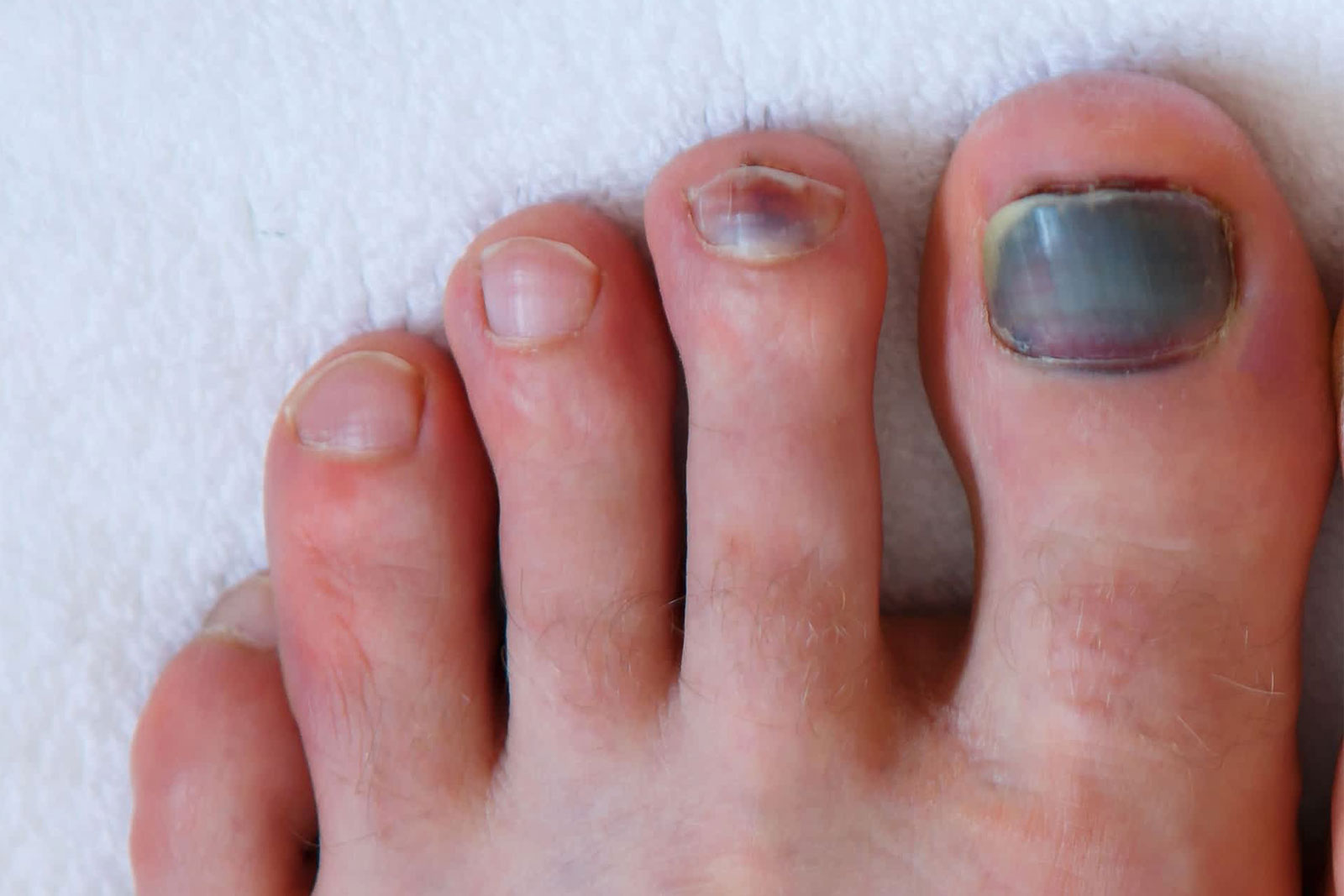What is a subungual haematoma?
A subungual haematoma is the medical term for bleeding and bruising under the nail. They are usually caused by a trauma or injury to the nail unit.
An example is, if you slam the door on your fingers or something heavy crushes your toes, this causes the blood vessels to break and leak underneath the nail. This can lead to intense pain and throbbing as blood collects under the nail.
What causes a subungual haematoma?
Subungual haematomas are usually caused by either one single major trauma (such as dropping a weight on the toe), or multiple minor traumas (such as wearing ill-fitting shoes) There are many causes for subungual haematoma, some of which include:
- Inappropriate footwear
- High heels
- Running
- Hiking
- Other activities such as football, basketball or ballet.
- Stubbing toe
- Dropping something on toe
Who gets a subungual haematoma?
Usually it is associated with ill-fitting footwear, heels, and those who take part in certain sporting activities such as marathon running or performing ballet en-pointe. In some cases, such as dropping something on the toe it is simply not avoidable.
What are the signs and symptoms of a subungual haematoma?
Signs and symptoms of subungual haematoma include:
- Nail feels tender/sore
- Evidence of blood underneath the nail
- Discolouration of the nail ( red, blue, purple, maroon, black)
- Feeling of pressure under the nail
- Throbbing pain under the nail
- Surrounding redness and swelling to the skin around the nail
How is a subungual haematoma diagnosed?
A subungual haematoma is usually easily diagnosed by a podiatrist with a thorough medical and social history account, alongside a visual examination.
Benefits of podiatry for subungual haematoma?
Podiatry intervention for a subungual haematoma would benefit by providing relief of symptoms associated with the subungual haematoma. Podiatrists will also advise how to care for the toe following your appointment, and give advice on how to prevent future recurrence of the subungual haematoma in the future where appropriate.
What would podiatry for a subungual haematoma involve?
Minor subungual hematomas do not cause any serious health problems and usually resolve without treatment or complications. Over the counter painkillers can help reduce initial inflammation and discomfort.
However, if the pain is unmanageable, and there is severe damage or trauma to the nail, you should seek medical advice.
If most of the nail plate is discoloured with blood and causing discomfort, as soon as possible after the injury has happened, you should visit a podiatrist. Podiatrists can perform a procedure where a small hole is drilled directly into the nail plate, allowing blood to drain the from under the nail, which can instantly relieve pain and pressure. The area is then cleaned and dressed and advice is given on how to care for the toe following that.
This procedure should not be attempted at home, as it can cause infections and other complications to the nail bed and make it worse.
You should seek medical attention if:
- pain is unbearable
- the injury happened to a baby or child
- the bleeding is uncontrollable
- there is a cut or laceration
- the base of the nail is damaged
- without injury, any nail turns dark or discoloured
Healing of the skin underneath the nail often takes no longer than a couple of weeks after the injury, if the blood is not drained shortly after the incident it will dry up and leave a dark/black discolouration to the nail which has to grow out. It can take up to 9-12 months for a subungual haematoma on the toenail to fully grow out.
However, if there is severe damage to the nail bed, the nail may grow back disfigured or sometimes there is little to no nail regrowth at all.
Summary
A subungual haematoma is bleeding under the nail that causes a red/dark discolouration; usually it coincides with initial pain, which settles on a short time. If the majority of the nail plate is affected and/or if it is causing any pain or discomfort then an appointment should be made with a podiatrist as soon as possible, who will usually cut back the lifted nail or drain the blood out which often provides immediate relief. If this treatment is not performed the blood is reabsorbed and dried up under the nail and will eventually grow out / or the affected nail will fall off.





